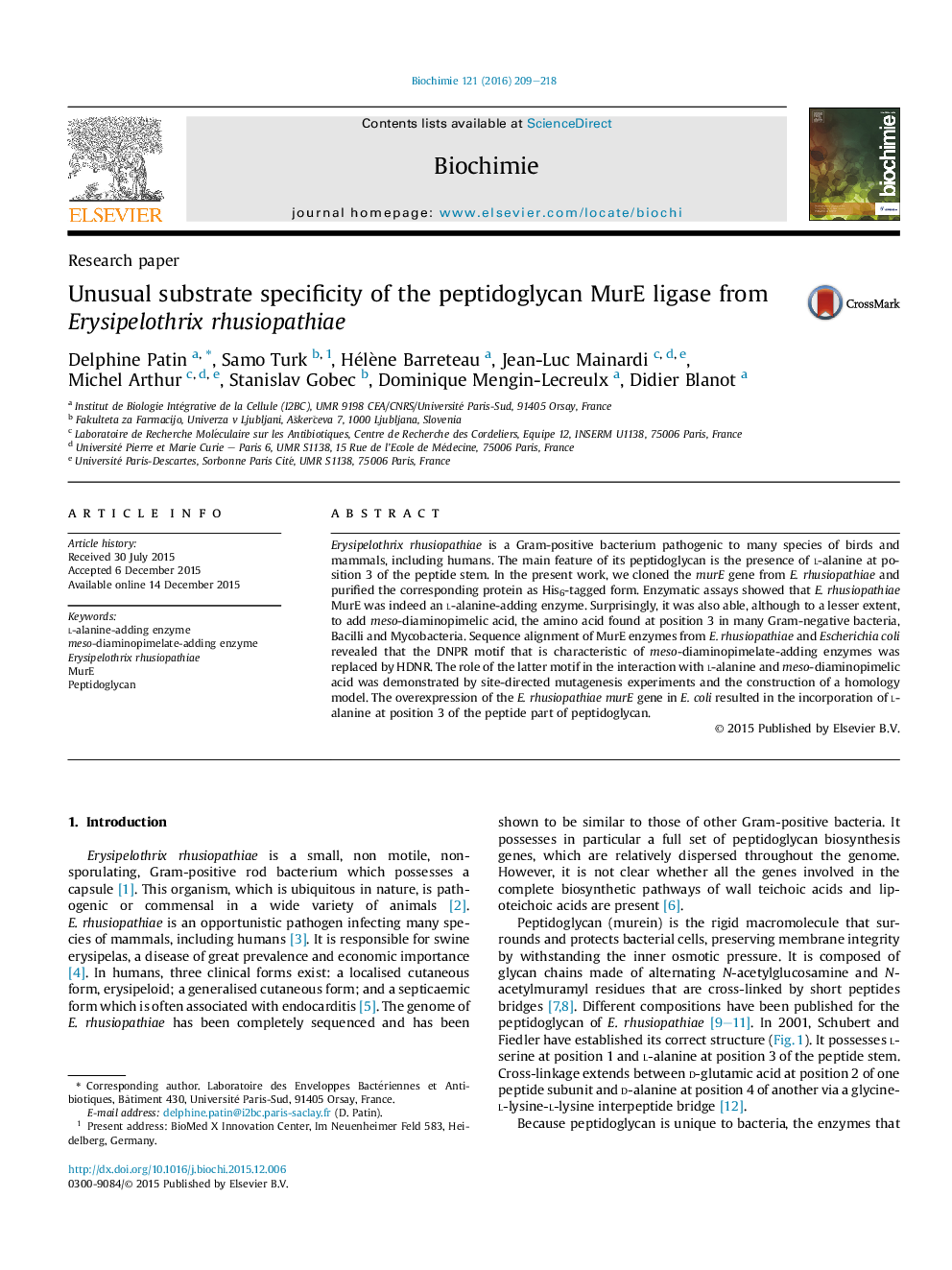| کد مقاله | کد نشریه | سال انتشار | مقاله انگلیسی | نسخه تمام متن |
|---|---|---|---|---|
| 1951928 | 1538410 | 2016 | 10 صفحه PDF | دانلود رایگان |

• Peptidoglycan from E. rhusiopathiae contains l-Ala at position 3 of the peptide stem.
• The substrate specificity of MurE from E. rhusiopathiae was studied.
• l-Ala was a substrate for MurEEr, but also meso-diaminopimelate in vitro.
• A HDNR motif was involved in the unusual substrate specificity of MurEEr.
• Upon MurEEr production, E. coli incorporated l-Ala into peptidoglycan at position 3.
Erysipelothrix rhusiopathiae is a Gram-positive bacterium pathogenic to many species of birds and mammals, including humans. The main feature of its peptidoglycan is the presence of l-alanine at position 3 of the peptide stem. In the present work, we cloned the murE gene from E. rhusiopathiae and purified the corresponding protein as His6-tagged form. Enzymatic assays showed that E. rhusiopathiae MurE was indeed an l-alanine-adding enzyme. Surprisingly, it was also able, although to a lesser extent, to add meso-diaminopimelic acid, the amino acid found at position 3 in many Gram-negative bacteria, Bacilli and Mycobacteria. Sequence alignment of MurE enzymes from E. rhusiopathiae and Escherichia coli revealed that the DNPR motif that is characteristic of meso-diaminopimelate-adding enzymes was replaced by HDNR. The role of the latter motif in the interaction with l-alanine and meso-diaminopimelic acid was demonstrated by site-directed mutagenesis experiments and the construction of a homology model. The overexpression of the E. rhusiopathiae murE gene in E. coli resulted in the incorporation of l-alanine at position 3 of the peptide part of peptidoglycan.
Journal: Biochimie - Volume 121, February 2016, Pages 209–218